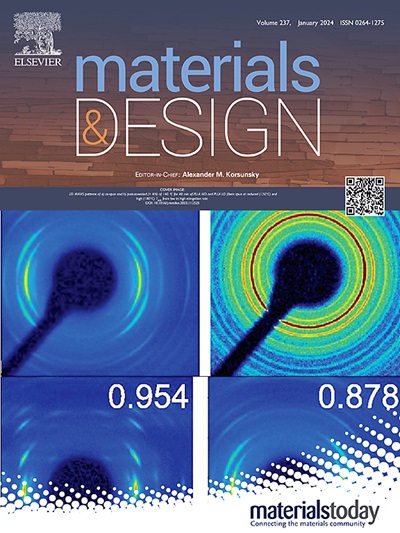Multifunctional nanofiber-based dressings in coordination with adipose-derived stem cells for accelerated burn wound healing
IF 7.6
2区 材料科学
Q1 MATERIALS SCIENCE, MULTIDISCIPLINARY
引用次数: 0
Abstract
Burn wound healing remains a significant clinical challenge due to infections and poor tissue regeneration. To address this issue, we developed a tri-layered wound dressing (TLWD) integrated with adipose-derived stem cells (ADSCs, TLWDA) to accelerate burn wound repair. The outer layer consists of radially aligned nanofibers coated with a gradient of epidermal growth factor (EGF) to promote epidermal regeneration. The middle layer is composed of dense gelatin nanofibers coated with methacrylate-chitosan hydrogel, providing mechanical support and antimicrobial properties. The inner layer features mesh-structured nanoyarns coated with gelatin nanofibers, which can regulate the paracrine secretion of ADSCs. Antibacterial assay and live/dead bacterial staining confirmed that the TLWDA scaffold exhibits excellent antimicrobial activity. Scratch assays demonstrated that TLWDA enhances the migration of keratinocytes, fibroblasts, and endothelial cells. Additionally, TLWDA markedly improves angiogenesis and upregulates the secretion of EGF and fibroblast growth factor (FGF2) from ADSCs. In vivo experiments, compared to TLWD or ADSCs alone, TLWDA significantly accelerates the healing process of burn wounds, while improving the thickness of the regenerated epidermal layer, collagen deposition, and vascularization. The synergistic effect of this multifunctional nanofiber-based composite scaffold with ADSCs offers a highly promising strategy for the effective repair of burn wounds.

求助全文
约1分钟内获得全文
求助全文
来源期刊

Materials & Design
Engineering-Mechanical Engineering
CiteScore
14.30
自引率
7.10%
发文量
1028
审稿时长
85 days
期刊介绍:
Materials and Design is a multi-disciplinary journal that publishes original research reports, review articles, and express communications. The journal focuses on studying the structure and properties of inorganic and organic materials, advancements in synthesis, processing, characterization, and testing, the design of materials and engineering systems, and their applications in technology. It aims to bring together various aspects of materials science, engineering, physics, and chemistry.
The journal explores themes ranging from materials to design and aims to reveal the connections between natural and artificial materials, as well as experiment and modeling. Manuscripts submitted to Materials and Design should contain elements of discovery and surprise, as they often contribute new insights into the architecture and function of matter.
 求助内容:
求助内容: 应助结果提醒方式:
应助结果提醒方式:


